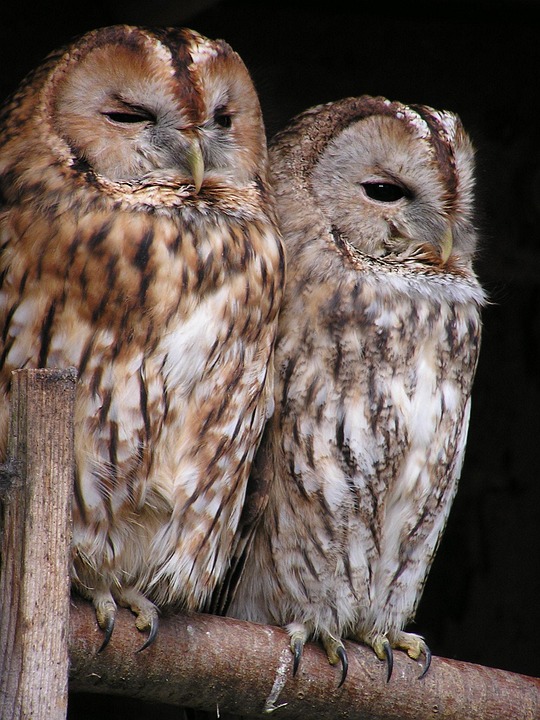Understanding the mechanisms that govern the formation of flocks in avian species is a fascinating endeavor, revealing insights into collective behavior, complexity, and the underlying principles of order emerging from chaos. Birds often exhibit mesmerizing flocking patterns, whereby large groups move in synchrony without any apparent leader. This phenomenon, inherent in various avian species, showcases the principles of scale invariance and self-organization in biological systems.
When observing a flock of birds, such as starlings performing a murmuration, one is struck by the seamless coordination and aesthetic complexity of their movements. This instinctual behavior can be attributed to simple rules followed by individual birds, often described through mathematical modeling. Each bird, or agent, alters its velocity and direction based on the presence and behavior of its nearest neighbors, demonstrating a decentralized decision-making process rooted in local interactions. The fascinating aspect of these interactions lies in their emergent properties, wherein the flock exhibits coherent motion without centralized control, embodying the concept of order arising from disorder.
At the nucleus of flocking behavior lies the principle of scale invariance, a concept derived from statistical physics. Scale invariance suggests that certain properties of a system remain unchanged regardless of the scale at which one observes them. In the context of bird flocks, this asserts that flock structure and dynamics manifest similar patterns at various scales—whether observed from the intricate movements of individual birds or the overarching formations of the entire flock.
The study of these behaviors summons inquiries into the mathematical frameworks that describe them. Models such as Reynolds’ boids effectively capture the essential dynamics of flocking through a set of simple rules: alignment, cohesion, and separation. Alignment involves adjusting the bird’s direction to match that of its neighbors, cohesion focuses on moving towards the average position of nearby birds, while separation prevents overcrowding by ensuring individual distance. Consequently, the collective behavior of the flock emerges from these basic interactions, illustrating how complex patterns can arise from simple, rule-based behavior.
The implications of such phenomena extend beyond ornithology into various disciplines, including physics, robotics, and computer science. By deciphering the rules governing flocking behavior, researchers aim to emulate these systems in artificial environments. This endeavor is exemplified in swarm robotics, where numerous robots exhibit collective behavior similar to that of birds. Understanding the scale-invariance in avian flocking can provide critical insights for developing algorithms that enhance cooperation and efficiency within robotic swarms.
Moreover, the ecological ramifications of bird flocking patterns are noteworthy. Flocking serves as an antipredatory mechanism, allowing species to evade threats through rapid, unpredictable movements. Research has demonstrated that the collective response of a flock to predators can significantly enhance individual survival rates. Thus, the study of flocking behavior not only provides a window into the life of birds but also elucidates the evolutionary advantages conferred by such intricate social dynamics.
The diversity of species exhibiting flocking behavior highlights the universality of these principles across the avian kingdom. From small songbirds to large geese, variations exist in how different species implement flock dynamics. For instance, some birds may rely heavily on visual cues, while others may incorporate auditory signals or even olfactory cues. This adaptability in communication mechanisms allows for resilience in varying environmental contexts, ensuring the stability of the flock amidst disruptions.
Within the framework of theoretical biology, questions arise regarding the extent to which external environmental factors influence flocking behavior. For instance, the availability of food resources, habitat fragmentation, and predation pressure are all factors that can affect flocking dynamics. Emerging research seeks to understand how these variables interact with the intrinsic behaviors of flocking individuals and whether they alter the fidelity of scale invariance within the flock.
In addition to environmental influences, the aging and social structure of flocks offer avenues for further exploration. Older or more experienced birds may play pivotal roles during critical phases of flocking, such as migration. Their leadership, which is not overt but based on accumulated knowledge, suggests a nuanced understanding of flock dynamics that merits additional study. The intersection of sociobiology and flocking behavior has the potential to yield deeper insights into the roles individuals play in collective decision-making.
Collectively, the study of flocking birds presents a multilayered tapestry of interactions, ecological significance, and theoretical implications. Insights gleaned from such investigations not only enrich our understanding of avian life but also provoke interdisciplinary dialogues spanning physics, systems theory, and evolutionary biology. As research unfolds, the principles governing birds that flock with scale invariance will continue to elucidate the broader themes of order, chaos, and adaptation in nature, urging a deeper appreciation for the complexities of group behavior.
As contemporary researchers harness the power of technology, employing high-resolution imaging and simulation techniques, the future of avian flock studies holds incredible potential. These advancements will enable scientists to dissect the intricacies of flocking behavior with unprecedented precision, leading to breakthroughs that will shed light on questions lingering at the fringes of our understanding of collective behavior in the natural world.










